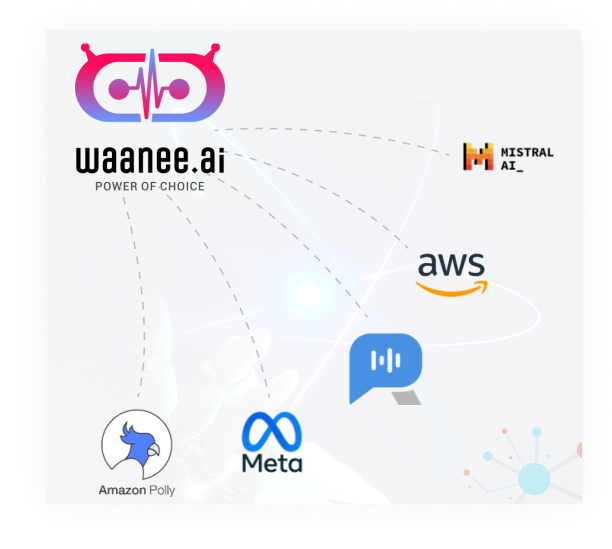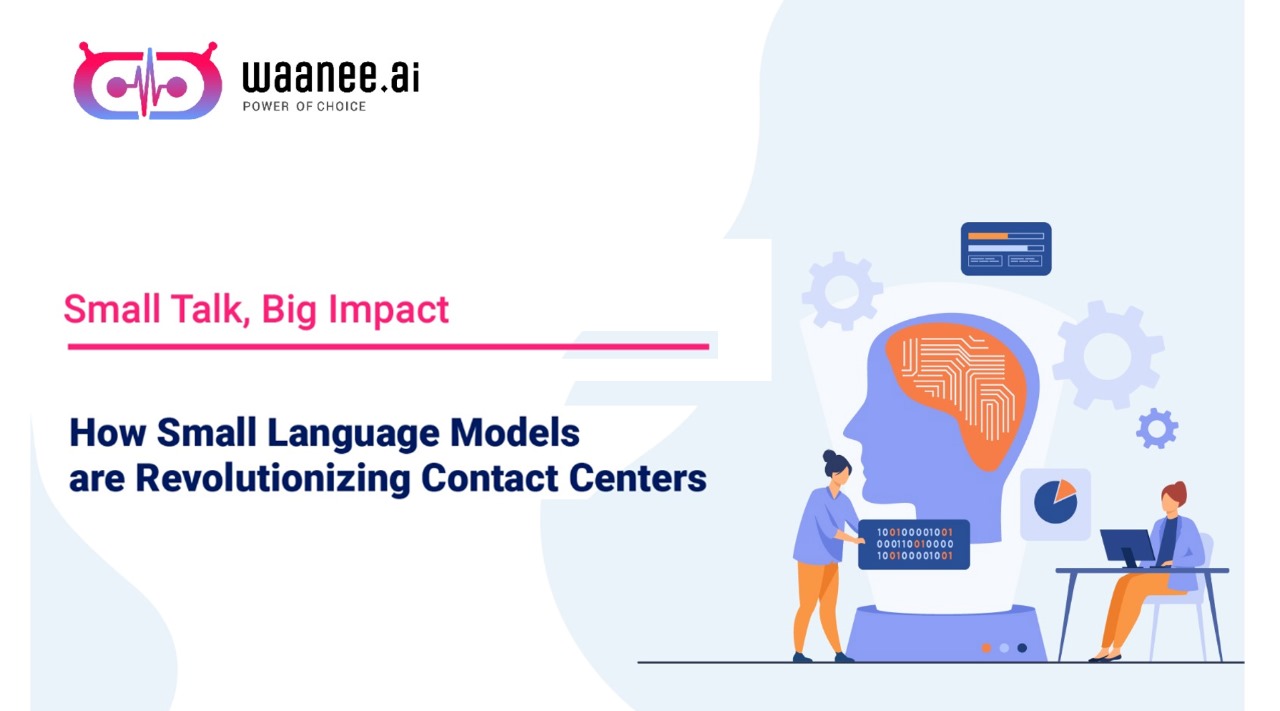
-
Waanee AI Labs
View All »

Get The Latest
How Multichannel (Voice + Chat + Email) QA Can Improve Overall Service Consistency
Read More »Live‑Call Assist vs Post‑Call Analysis: What to Use and When
Read More »From Data to Insights: How Conversation Analytics Can Shape Your CX Strategy
Read More » - Blog
Small Talk, Big Impact: How Small Language Models are Revolutionizing Contact Centers
Posted by info@waanee.ai, on 18 May, 2024 09:07 AM

The customer service landscape is undergoing a significant transformation, and at the forefront of this change are small language models (SLMs). While large language models (LLMs) have garnered much attention, SLMs are quietly proving their worth in the trenches of contact centers. This blog post will delve into the exciting world of SLMs, explore their use cases in contact centers, compare them to LLMs, and peer into the future of this innovative technology, including deployment and cost considerations.
Small But Mighty: The Power of SLMs
SLMs are a type of artificial intelligence (AI) trained on a focused dataset, making them smaller and less computationally expensive than their LLM counterparts. This translates to several advantages:
- Accessibility: Due to their lower resource requirements, SLMs can be deployed on a wider range of hardware, making them accessible to contact centers of all sizes.
- Focus and Efficiency: SLMs excel at specific tasks, allowing for more targeted and efficient applications within a contact center environment.
- Faster Training: The streamlined nature of SLMs allows for quicker training on customized datasets, enabling them to adapt to the unique needs of each contact center.
SLMs in Action: Transforming Contact Center Operations
SLMs are making waves in contact centers by automating tasks and enhancing the customer experience:
- Smart Chatbots: SLMs power chatbots that can answer frequently asked questions, troubleshoot basic issues, and even schedule appointments, freeing up human agents for complex inquiries.
- Sentiment Analysis: SLMs can analyze customer interactions to gauge sentiment, allowing agents to tailor their approach and proactively address frustrations.
- Automated Summarization: SLMs can generate summaries of customer calls and chats, saving agents valuable time and improving post-call processing efficiency.
LLMs vs. SLMs: Picking the Right Tool for the Job
While both LLMs and SLMs have their place, they cater to different needs:
- LLMs: These all-rounders excel at complex tasks like generating creative text formats or translating languages. However, their computational demands and broad focus may not be ideal for specific contact center applications.
- SLMs: Specialists in targeted tasks, SLMs offer a cost-effective and efficient solution for automating repetitive tasks and enhancing agent productivity within a contact center.
Deployment and Cost Considerations
Deployment:
- Flexibility: SLMs offer deployment flexibility. Unlike LLMs requiring specialized hardware, SLMs can run on various setups, including cloud platforms, on-premise servers, or even edge devices depending on specific needs. This makes them accessible to a wider range of contact centers.
- Cloud-based Options: Cloud-based services for SLM deployment are growing. These services handle infrastructure management and offer pay-as-you-go pricing models, making them ideal for scalable and cost-effective solutions.
- Integration Considerations: Consider integration with existing contact center platforms during deployment. Ensure the chosen deployment method allows for seamless integration for a smooth user experience.
Cost:
- Cost-Effectiveness: SLMs are significantly more cost-effective than LLMs. Lower computational requirements translate to lower operational costs for running the models.
- Pay-per-Use Options: Cloud platforms offer pay-per-use pricing models for SLM inference. This allows contact centers to only pay for the resources they use, making it a budget-friendly option for handling fluctuating call volumes.
- Long-Term ROI: SLMs offer a potential long-term return on investment (ROI). By automating tasks and improving efficiency, SLMs can free up agents’ time, leading to improved customer satisfaction and potentially decreased operational costs.
The Future of SLMs: A Look Ahead
The future of SLMs in contact centers is bright. Here’s what we can expect:
- Increased Personalization: SLMs will become even more adept at personalizing interactions, understanding customer intent, and providing contextually relevant support.
- Enhanced Agent Support: SLMs will evolve into powerful agent assistants, offering real-time recommendations, knowledge base suggestions, and automated post-call tasks.
- Focus on Multimodality: SLMs will integrate seamlessly with various communication channels like voice, text, and chat, providing a unified and consistent customer experience.
Conclusion
Small language models are making a significant impact on the way contact centers operate. Their targeted efficiency, affordability, and adaptability make them a game-changer for businesses looking to streamline operations, improve customer satisfaction, and empower their agents. As SLMs continue to evolve, we can expect even more innovative applications that will redefine the future of customer service.
Revolutionize CX
with AI power
Delivers personalized interactions and immediate, data-driven solutions powered by AI, transforming customer experiences.

We use cookies!
We use cookies to ensure that we give you the best experience on our website.
By continuing to use this site, you accept our use of cookies. Learn more
 Recruit Industries Agents
Recruit Industries Agents Build Your Agent
Build Your Agent Improve Self Service
Improve Self Service Employee Experience
Employee Experience Sales and Cross Sales
Sales and Cross Sales Calling Script
Calling Script Integration & APIs
Integration & APIs Auto Summarization
Auto Summarization Conversational Intelligence
Conversational Intelligence Sentiment Analytics
Sentiment Analytics Auto QA
Auto QA Net Promoter Score
Net Promoter Score